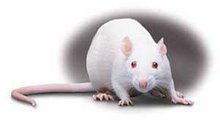This week, Edward Norton Lorenz died:
http://www.telegraph.co.uk/news/main.jhtml?xml=/news/2008/04/18/db1801.xml
Why is this notable? Because Dr. Lorenz is an early researcher in Chaos Theory who came up with a mathematical principle called the Butterfly Effect.
 What is The Butterfly Effect? No, I'm not talking about that singularly horrible B sci-fi movie made a few years ago, or its even worse sequel. I'm talking about the mathematical theory that very small changes early on in a system, such as "the flap of a butterfly's wings in Brazil" could lead to extreme repercussions later in that system, such as "a tornado in Texas."
What is The Butterfly Effect? No, I'm not talking about that singularly horrible B sci-fi movie made a few years ago, or its even worse sequel. I'm talking about the mathematical theory that very small changes early on in a system, such as "the flap of a butterfly's wings in Brazil" could lead to extreme repercussions later in that system, such as "a tornado in Texas."Lorenz was a meteorologist (and previously an Army Air Corps weather forecaster during WWII) who was trying to use mathematical models to make long-range forecasts of wind currents. One day back in 1961, Lorenz ran a computer simulation that he had run before (using one of those early, building-sized computers) and got a completely different result than he had the first time. Very surprising, since he had thought everything had been entered exactly the same. It turns out that this time he had rounded the number 0.506127 to 0.506, a 0.1% difference.
Some people would shrug that off, re-enter the correct number, and continue on with their work. I've known lab rats like that. But Lorenz was among the few who could see this result and realize the great significance of it. What he had stumbled upon was proof that very small changes, like a seemingly minor increase in temperature or wind speed and direction, could cause profound weather deviations down the line, perhaps in a totally different part of the world. This factor was dubbed the "Lorenz Attractor."
 For example, if you start a ball rolling at the top of a hill, but it is at only a very slightly different position, it will likely wind up at a very different position at the bottom. Or if a seagull flapped its wings at just the right time and place in Brazil, the change it created in the wind could lead to a tornado in Texas (to use his examples). These sorts of things have been demonstrated in simulations again and again, including with the newest supercomputers. The movie "It's A Wonderful Life" illustrates this principle, in a more sappy, cultural manner (I cry everytime when George Bailey's brother makes that toast at the end!).
For example, if you start a ball rolling at the top of a hill, but it is at only a very slightly different position, it will likely wind up at a very different position at the bottom. Or if a seagull flapped its wings at just the right time and place in Brazil, the change it created in the wind could lead to a tornado in Texas (to use his examples). These sorts of things have been demonstrated in simulations again and again, including with the newest supercomputers. The movie "It's A Wonderful Life" illustrates this principle, in a more sappy, cultural manner (I cry everytime when George Bailey's brother makes that toast at the end!).So, let me see if I understand: if a plaza full of Germans eating Octoberfest sauerkraut, brautworst, and beer suddenly let loose with a cloud of warm gas (from whichever end you choose), the sudden change in heat and wind could cause a cascade of events that leads to winds that rip across the Atlantic and belch up a hurricane that ravages America?
Damned Germans. I knew it! They caused Hurricane Katrina!
That's it! I'm throwing out my laderhosen.
Of course, those "Lorenz Attractors" can prevent devient weather, too.
And as for Dr. Lorenz, he led a very active life, with many awards, scholarly papers, and academic achievements, most of which seem to revolve around the later refinements of his initial discovery. You could say his personal "Butterfly Effect" was his own discovery of the Butterfly Effect, if that makes any sense. His Butterfly Effect theory has led to a better understanding of seemingly random events that can drastically change our weather – more important now than ever with global warming – and has been used in science fields far beyond meteorology.
He was an avid sportsman, even into old age. But cancer finally claimed him a few days ago, on April 16. He died at home in Cambridge, with family, having finished yet another paper only a week before. He was 90 years old.
Thank you for your contributions, Dr. Lorenz. And I'm glad to hear that your death wasn't a chaotic one. I just wonder what that last breath of yours did to the weather.
Images taken from HERE and HERE.

















